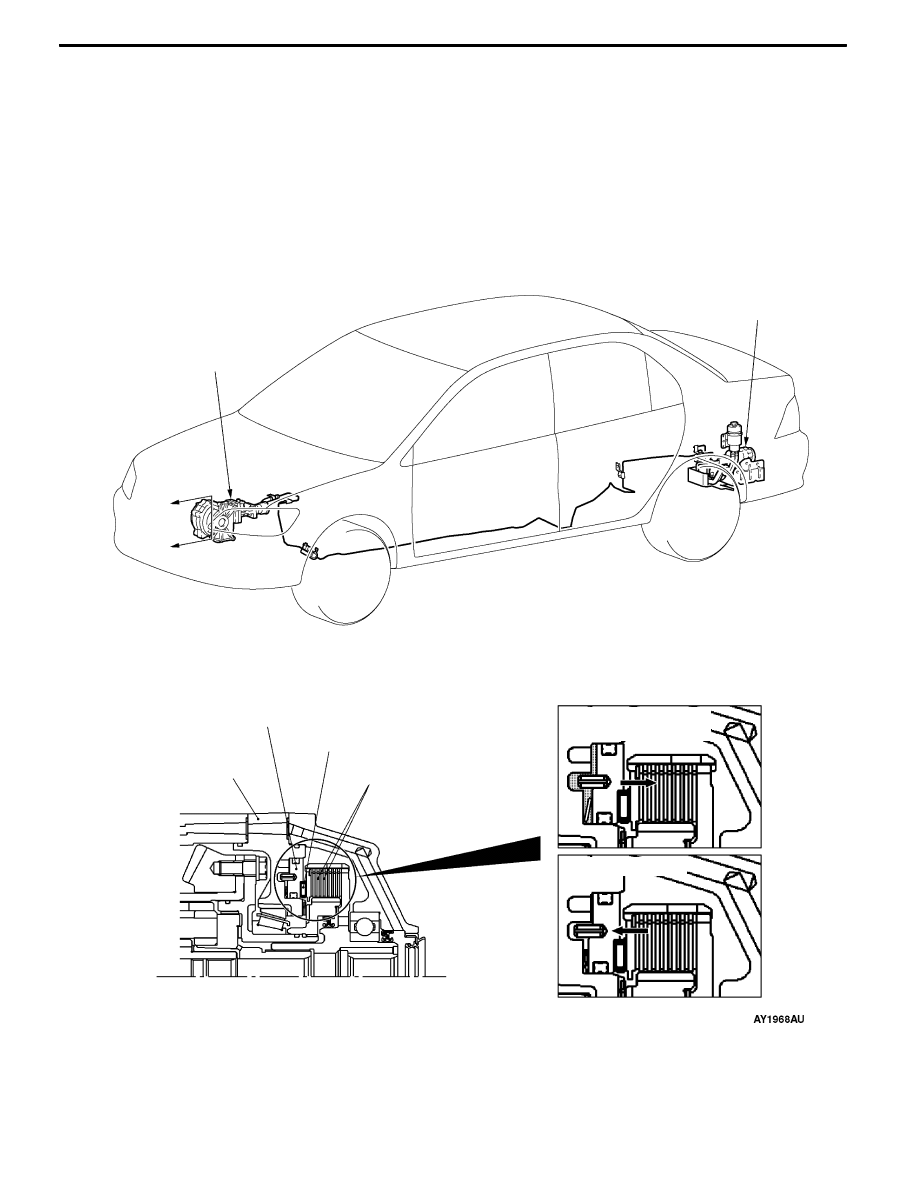Mitsubishi Lancer Evolution 7. Manual - part 16

POWER TRAIN - ACD and AYC
2-17
TRANSFER LIMITED SLIP DIFFERENTIAL
During acceleration and deceleration, the piston is moved in the right direction according to the oil pressure
from the hydraulic unit to connect the hydraulic multi plate clutch (friction plate and disc) and set the
center differential to the direct engagement state as much as possible. This improves the acceleration
performance and stability during deceleration.
During turning, the oil pressure from the hydraulic unit stops, the piston operates in the left direction
to release the hydraulic multi plate clutch and free the center differential to improve the turning performance.
If the parking brake is pulled while driving at a vehicle speed above 5 km/h, the hydraulic multi plate
clutch will also be released and the center differential set as close as possible to the free state.
Transfer hydraulic case
Piston
Thrust bearing
Hydraulic multi plate clutch
(Friction plate and disk)
ACD transfer
Hydraulic unit
assembly
A
A
Section A - A
<During acceleration
and deceleration>
<During turning>